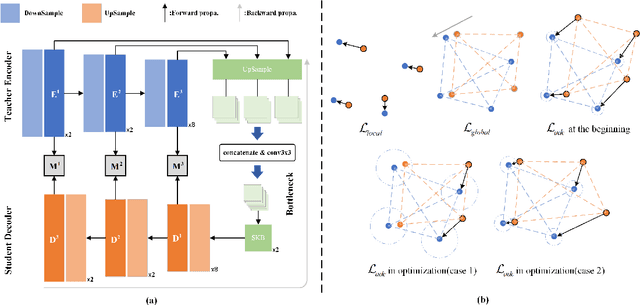Chengming Liu
A Synergy Scoring Filter for Unsupervised Anomaly Detection with Noisy Data
Feb 19, 2025Abstract:Noise-inclusive fully unsupervised anomaly detection (FUAD) holds significant practical relevance. Although various methods exist to address this problem, they are limited in both performance and scalability. Our work seeks to overcome these obstacles, enabling broader adaptability of unsupervised anomaly detection (UAD) models to FUAD. To achieve this, we introduce the Synergy Scoring Filter (SSFilter), the first fully unsupervised anomaly detection approach to leverage sample-level filtering. SSFilter facilitates end-to-end robust training and applies filtering to the complete training set post-training, offering a model-agnostic solution for FUAD. Specifically, SSFilter integrates a batch-level anomaly scoring mechanism based on mutual patch comparison and utilizes regression errors in anomalous regions, alongside prediction uncertainty, to estimate sample-level uncertainty scores that calibrate the anomaly scoring mechanism. This design produces a synergistic, robust filtering approach. Furthermore, we propose a realistic anomaly synthesis method and an integrity enhancement strategy to improve model training and mitigate missed noisy samples. Our method establishes state-of-the-art performance on the FUAD benchmark of the recent large-scale industrial anomaly detection dataset, Real-IAD. Additionally, dataset-level filtering enhances the performance of various UAD methods on the FUAD benchmark, and the high scalability of our approach significantly boosts its practical applicability.
MiniMaxAD: A Lightweight Autoencoder for Feature-Rich Anomaly Detection
May 16, 2024



Abstract:Previous unsupervised anomaly detection (UAD) methods often struggle with significant intra-class diversity; i.e., a class in a dataset contains multiple subclasses, which we categorize as Feature-Rich Anomaly Detection Datasets (FRADs). This is evident in applications such as unified setting and unmanned supermarket scenarios. To address this challenge, we developed MiniMaxAD: a lightweight autoencoder designed to efficiently compress and memorize extensive information from normal images. Our model utilizes a large kernel convolutional network equipped with a Global Response Normalization (GRN) unit and employs a multi-scale feature reconstruction strategy. The GRN unit significantly increases the upper limit of the network's capacity, while the large kernel convolution facilitates the extraction of highly abstract patterns, leading to compact normal feature modeling. Additionally, we introduce an Adaptive Contraction Loss (ADCLoss), tailored to FRADs to overcome the limitations of global cosine distance loss. MiniMaxAD was comprehensively tested across six challenging UAD benchmarks, achieving state-of-the-art results in four and highly competitive outcomes in the remaining two. Notably, our model achieved a detection AUROC of up to 97.0\% in ViSA under the unified setting. Moreover, it not only achieved state-of-the-art performance in unmanned supermarket tasks but also exhibited an inference speed 37 times faster than the previous best method, demonstrating its effectiveness in complex UAD tasks.
 Add to Chrome
Add to Chrome Add to Firefox
Add to Firefox Add to Edge
Add to Edge